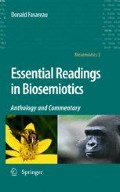Abstract
In 1866, the recently formed Societe Linguistique de Paris passed an official resolution banning the presentation of any further papers regarding the origins of human language. The nature of the inquiry itself, it was decided, lacked even the possibility of scientific certainty – and all work pertaining to it was likewise dismissed on the grounds of being empirically irresolvable, incorrigibly speculative and unproductively divisive. Almost 150 years later, neurobiologist and biological anthropologist Terrence W. Deacon would author an empirically vigorous and conceptually groundbreaking study of language origins challenging many of the core assumptions underlying both the biological innatist and the evolutionary psychological theories of language evolution that had found their way into scientific discourse since the Societe’s inquiry-blocking resolution.
Terrence Deacon (1950– )
Access this chapter
Tax calculation will be finalised at checkout
Purchases are for personal use only
Notes
- 1.
Professor Deacon was generous enough to provide me with a copy of this long-ago written text, after the fact its existence came up in casual conversation at the Gregory Bateson Centennial Conference that Jesper Hoffmeyer was hosting at the University of Copenhagen in 2005. A published version from 1976 does exist (see the reference list for this section), although copies are extremely rare. However, Deacon is willing to provide an electronic copy to anyone sending him a request for it, and this and many of his other seminal papers can be downloaded from his website at http://teleodynamics.com.
- 2.
See de Saussure (1916). I have simplified this account considerably from what de Saussure described. He recognized an orthogonal “plane” to that of reference, associated with the combinatorial and diachronic (time-dependent) processes of language.
- 3.
E.g., Cheney and Seyfarth (1992).
- 4.
Though I will avoid most of Peirce’s complex terminology and only obliquely suggest the unique philosophical context in which he embedded his semiotic theory, I believe the following analysis will stay close to his original insights, which focused on representation as process, not as a static relationship, and recognized these sign types as hierarchical levels of representation, not as opposed categorical alternatives. For a brief set of excepts of some of Peirce’s core writngs on the topic, I recommend Buchler, ed. (1955). Many of Peirce’s major writings on the semiotic basis of logic were compiled in the Hartshorne and Weiss, eds., collection of Peirce’s papers (1978), especially Vol. II.
- 5.
- 6.
Described in Savage-Rumbaugh and Lewin (1994).
- 7.
Rumbaugh (1977).
- 8.
I have simplified the paradigm a bit by omitting mention of an additional key that signaled the start of a trial (sometimes glossed in a sort of tongue-in-cheek fashion as “Please”) and one to signify its end (sometimes glossed as a period). These were essentially irrelevant to the problem except as added distractors, since they did not vary from trial to trial, and such glosses could be quite misleading.
- 9.
Savage-Rumbaugh and Lewin (1994).
- 10.
Piaget (1952).
- 11.
Vygotsky (1978).
References
Cheney, D., Seyfarth, R. (1992) Meaning, reference, and intentionality in the natural vocalizations of monkeys. In: Nishida, T., McGrew, C. W., Marler, P., Pickford, M., de Waal, F. (Eds.) Topics in Primatology, Vol. 1: Human Origins. Tokyo: Tokyo University Press.
de Saussure, F. (1916) Cours de linguistique générale. Paris: Payot. See also the 1969 translation by Baskin, W.: Course in General Linguistics. New York: McGraw-Hill.
Peirce, C. S. (1978) Collected Papers. Vol. II. Elements of Logic. Hartshorne, C., Weiss, P. (Eds.), Cambridge, MA: Belknap.
Piaget, J. (1952) The Origins of Intelligence in Children. New York: International Universities Press.
Rumbaugh, D. (Ed.) (1977) Language Learning by a Chimpanzee: The Lana Project. New York: Academic Press.
Savage-Rumbaugh, E. S. (1986) Ape Language: From Conditioned Response to Symbol. New York: Columbia University Press.
Savage-Rumbaugh, E. S., Rumbaugh, D. M., Boysen, S. (1978) Symbolization, language and chimpanzees: A theoretical reevaluation based on initial language acquisition processes in four young Pan troglodytes. Brain and Language 6, 265.
Savage-Rumbaugh, E. S., Rumbaugh, D. M., Smith, S. T., Lawson, J. (1980) Reference: The linguistic essential. Science 210, 922–925.
Savage-Rumbaugh, E. S., Lewin, R. (1994) Kanzi: The Ape at the Brink of the Human Mind. New York: John Wiley.
Vygotsky, L. S. (1978) Mind in Society. Initially translated by Luria, A. R. and Cole,M., John-Steiner, V., Scribner, S., Souberman, E. (Eds.) Cambridge, MA: Harvard University Press.
Author information
Authors and Affiliations
Rights and permissions
Copyright information
© 2009 Springer Science+Business Media B.V.
About this chapter
Cite this chapter
Favareau, D. (2009). Excerpts from The Symbolic Species . In: Essential Readings in Biosemiotics. Biosemiotics, vol 3. Springer, Dordrecht. https://doi.org/10.1007/978-1-4020-9650-1_18
Download citation
DOI: https://doi.org/10.1007/978-1-4020-9650-1_18
Publisher Name: Springer, Dordrecht
Print ISBN: 978-1-4020-9649-5
Online ISBN: 978-1-4020-9650-1
eBook Packages: Biomedical and Life SciencesBiomedical and Life Sciences (R0)

